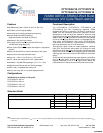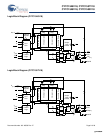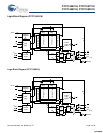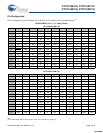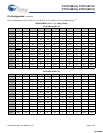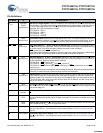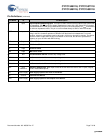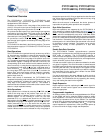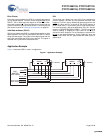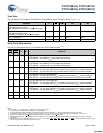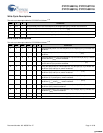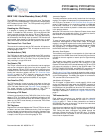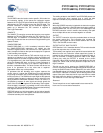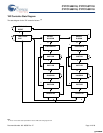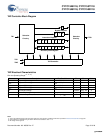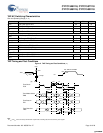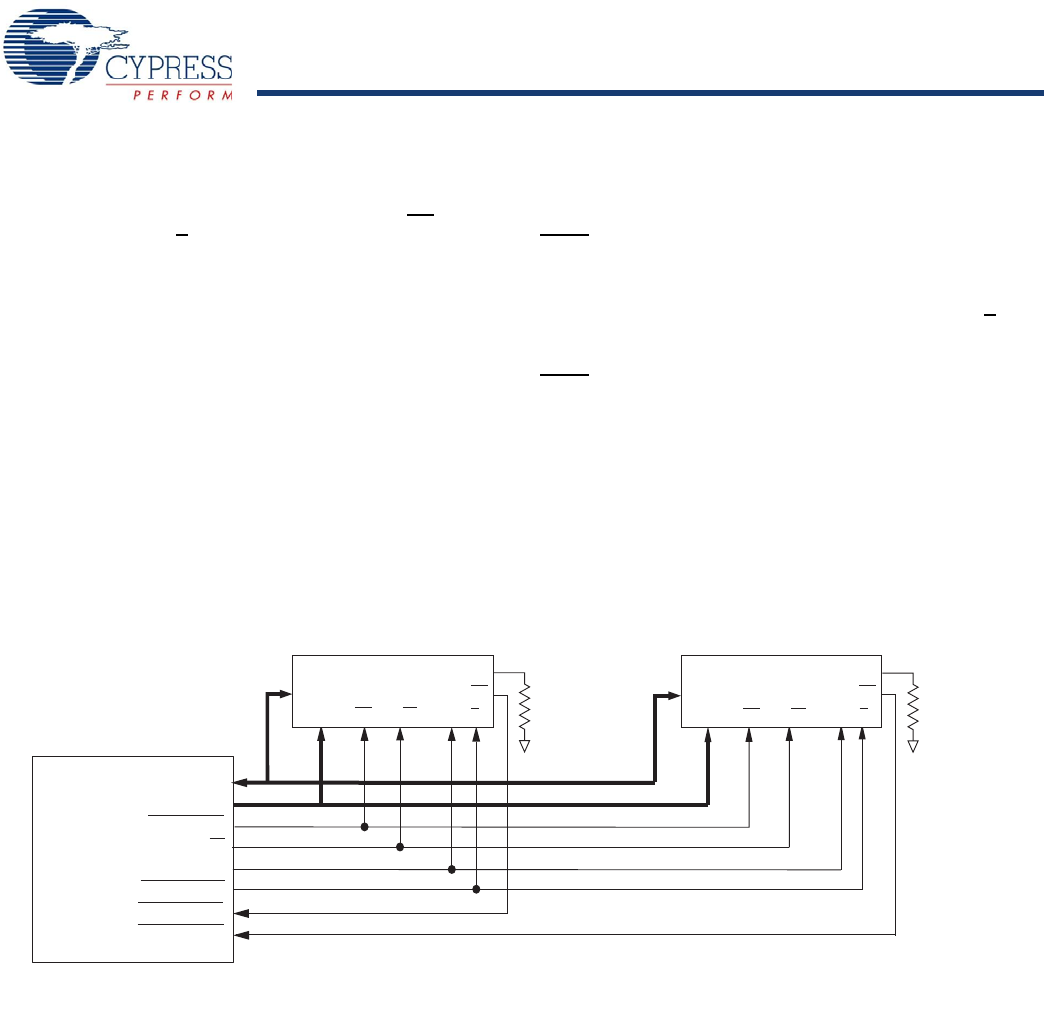
CY7C1546V18, CY7C1557V18
CY7C1548V18, CY7C1550V18
Document Number: 001-06550 Rev. *E Page 9 of 28
Echo Clocks
Echo clocks are provided on the DDR-II+ to simplify data capture
on high-speed systems. Two echo clocks are generated by the
DDR-II+. CQ is referenced with respect to K and CQ is refer-
enced with respect to K
. These are free-running clocks and are
synchronized to the input clock of the DDR-II+. The timing for the
echo clocks is shown in Switching Characteristics on page 23.
Valid Data Indicator (QVLD)
QVLD is provided on the DDR-II+ to simplify data capture on high
speed systems. The QVLD is generated by the DDR-II+ device
along with data output. This signal is also edge aligned with the
echo clock and follows the timing of any data pin. This signal is
asserted half a cycle before valid data arrives.
DLL
These chips use a Delay Lock Loop (DLL) that is designed to
function between 120 MHz and the specified maximum clock
frequency. The DLL may be disabled by applying ground to the
DOFF
pin. When the DLL is turned off, the device behaves in
DDR-I mode (with 1.0 cycle latency and a longer access time).
For more information, refer to the application note, “DLL Consid-
erations in QDRII/DDRII/QDRII+/DDRII+”. The DLL can also be
reset by slowing or stopping the input clocks K and K
for a
minimum of 30ns. However, it is not necessary to reset the DLL
to lock to the desired frequency. During Power-up, when the
DOFF
is tied HIGH, the DLL gets locked after 2048 cycles of
stable clock.
Application Example
Figure 1 shows two DDR-II+ used in an application.
Figure 1. Application Example
BUS
MASTER
(CPU or ASIC)
DQ
Addresses
Cycle Start
R/W
Source CLK
Source CLK
Echo Clock1/Echo Clock1
Echo Clock2/Echo Clock2
R = 250ohms
LD R/W
DQ
A
SRAM#1
K
ZQ
CQ/CQ
K
R = 250ohms
LD R/W
DQ
A
SRAM#2
K
ZQ
CQ/CQ
K
[+] Feedback [+] Feedback



